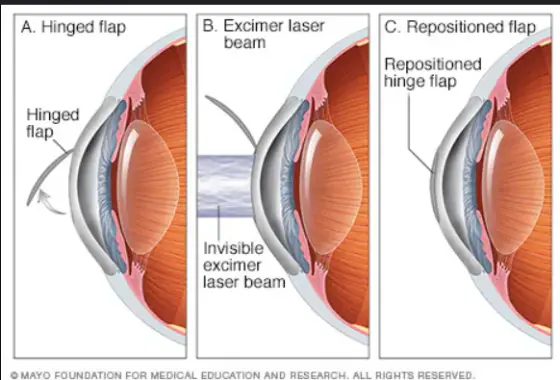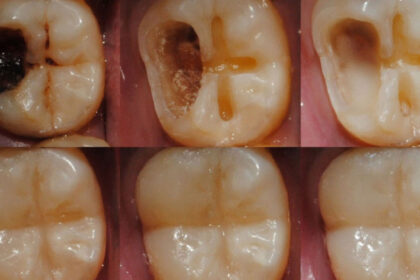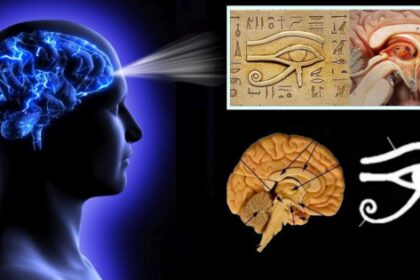Why the Creator of LASIK Won’t Get LASIK – And What It Means for Your Eyes
When a revolutionary medical procedure hits the mainstream, most people assume the creator must be its biggest advocate. But in the case of LASIK surgery—the popular laser-based vision correction procedure—even its inventor, Dr. Gholam A. Peyman, has reservations about undergoing it himself. And once you understand the deeper science behind how LASIK interacts with the eye’s biology, especially its light-sensitive cells, his caution starts to make a lot more sense.
In fact, even the FDA has reevaluated LASIK surgery recently.
The Unseen Cost of LASIK: Damage to a Critical Light Receptor
LASIK works by reshaping the cornea with a laser to correct vision problems like nearsightedness, farsightedness, and astigmatism. While it can provide rapid improvements in vision clarity, it also has the potential to damage an important, often-overlooked photoreceptor in the eye: the intrinsically photosensitive retinal ganglion cells (ipRGCs).
Unlike the rods and cones that handle visual perception, ipRGCs are specialized cells in the retina that detect ambient light levels and transmit that information directly to the brain’s suprachiasmatic nucleus (SCN)—your body’s master circadian clock. These cells are not responsible for seeing shapes or colors, but they are essential for regulating your internal rhythm.
When these receptors are compromised—either by damage from laser energy or surgical disturbance—it can disrupt a cascade of biological systems tied to light perception:
- Circadian Rhythm – Your sleep-wake cycles are regulated by light signals sent via the ipRGCs. Disruption can lead to insomnia, fatigue, or jet lag–like symptoms.
- Hormonal Regulation – Melatonin, cortisol, and other hormones that control stress, energy, and recovery are influenced by light signaling.
- Metabolism & Hunger – Light input affects the brain’s hypothalamus, which helps regulate appetite and body weight.
- Mood and Mental Health – ipRGCs also impact mood by influencing serotonin and dopamine pathways. Dysregulated light perception can be linked to seasonal affective disorder (SAD) and other forms of depression.
In essence, damaging these receptors means potentially throwing off your body’s entire biological clock—and with it, sleep, mood, and metabolism and this is something that lasik can very well do.
Additionally Lasik Causes Dry Eyes:
Dry eyes are one of the most common side effects after LASIK. Here’s a breakdown of the data:
- Immediately after LASIK: Around 50% to 60% of patients report some degree of dry eye symptoms within the first few weeks to 3 months post-op.
- At 6 months post-LASIK: The percentage drops significantly. Studies show about 20% to 30% still report symptoms.
- At 12 months or more: Long-term persistent dry eye affects approximately 5% to 10% of patients, though severity varies.
Although these symptoms do seem to diminish, 1 out of 10 to 1 out of 20 people still suffer from dry eyes long-term.
Why Even the Inventor Won’t Risk It
Dr. Peyman’s hesitation to get LASIK isn’t about doubting the technology—he knows it works. His concern lies in the long-term side effects that are not yet fully understood. Dry eyes, halos, light sensitivity, and potential night vision problems are frequently reported. But subtler, systemic effects—like circadian dysregulation—are harder to track and far more complex.
Considering the crucial role of ipRGCs in non-visual biological functions, even a small risk of harming them may not be worth the trade-off for someone aware of the full picture.
Supporting Your Eyes—With or Without LASIK
If you’re considering LASIK—or even just looking to maintain optimal eye health in the digital age—it’s wise to support your eyes with targeted nutrition. Here are two standout supplements worth considering:
1. Qualia Vision by Qualia Life
This premium eye health supplement is designed to support vision clarity, macular health, and resilience against blue light damage. It includes ingredients like Lutemax® 2020 (lutein + zeaxanthin), Astaxanthin, Bilberry extract, and Taurine—all of which have been clinically studied for their protective effects on the retina and oxidative stress reduction. It also supports mitochondrial function in eye cells, potentially helping ipRGCs recover and function optimally.
Click here to get Qualia Vision, the best eye health supplement I could find.
Discount code: HealthyWildAndFree
Here’s an interview with the formulator of Qualia Vision to fully explain the formula:
Click here to get Qualia Vision, the best eye health supplement I could find.
Discount code: HealthyWildAndFree
2. Astaxanthin
Known as one of the most potent natural antioxidants, Astaxanthin helps protect the retina from oxidative stress and inflammation, particularly from light-induced damage. It’s often referred to as “sunglasses for your cells.” If you’re going to undergo LASIK—or spend hours in front of screens daily—this is a supplement that belongs in your toolkit.
Pro Tip: If you’re getting LASIK, begin supplementing with Astaxanthin at least 2-4 weeks prior to surgery and continue afterward. This can help fortify your retinal tissues and mitigate potential oxidative damage from the laser procedure.
Astaxanthin is in the Qualia vision formula.
Click here to get Qualia Vision, the best eye health supplement I could find.
Discount code: HealthyWildAndFree
Final Thoughts
LASIK can offer a life-changing improvement in vision—but it’s not without risks, especially when it comes to the delicate interplay between light, retinal cells, and your body’s circadian rhythm. If even the procedure’s inventor is cautious, it’s worth taking a thoughtful, well-informed approach.
Whether you choose to undergo LASIK or not, your eyes—and your overall health—will thank you for supporting them with nutrients like those in Qualia Vision and Astaxanthin. In a world flooded with artificial light and digital screens, protecting the pathways that connect light to biology has never been more important.





